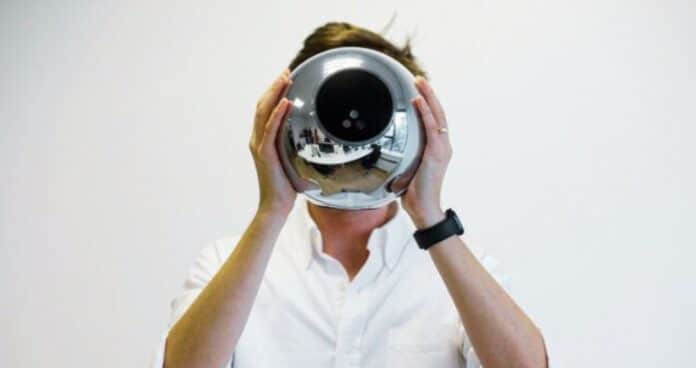Worldcoin is a cryptocurrency project that aims to distribute its tokens (WLD) to every person on the planet through an iris-based verification system. Spearheaded by OpenAI CEO Sam Altman, the project aims to create a “fairly distributed, global basic income” that would foster financial inclusion.
However, since its launch last week, Worldcoin has faced a lot of criticism from various quarters, including privacy advocates, crypto enthusiasts, and even Ethereum co-founder Vitalik Buterin. Several studies have also raised suspicions on its “opaque” data collection process.
Worldcoin Ecosystem Raises Data Concerns
Worldcoin requires users to scan their eyes with a device called the Orb, which captures their iris and other biometric data. This will create a digital identity protocol called “World ID” which will act as a passport for human users on various platforms. The project claims that this data is encrypted and stored on a secure database that only Worldcoin can access, and that it is used to ensure that each person can only receive WLD once.
Many critics have warned about the privacy and security implications of collecting such sensitive data from millions of people, especially in developing countries where data protection laws are weak or nonexistent. Data breaches are highly common on the internet and there is no reason to believe Worldcoin is immune to it. If the Orb is hacked or tampered with, the biometric data of its users could be exposed to malicious actors who could use it for identity theft, fraud, or surveillance.
It would make it impossible for users to claim their WLD or prove their identity if anything happens to the orb or the database. Moreover, unauthorized parties, such as governments, corporations, or criminals can use the data for personal purposes that users may not consent to, such as profiling, targeting, or discrimination.
What About Zero-Knowledge Proofs (ZKPs)?
Worldcoin uses zero-knowledge proofs (ZKPs), a cryptographic technology that allows someone to prove that they know something without actually revealing what they know. ZKPs use a mathematical function that is difficult to compute, but easy to verify. This system is used to verify someone’s identity or to prove that they have access to a certain piece of information, without revealing the information itself.
When a user scans their iris with the Worldcoin Orb, the device generates a ZKP that proves that the user is a unique human being. The process does not reveal any personal information about the user, such as their name, address, or date of birth. The ZKP is then sent to the Worldcoin network, where it is verified by other nodes. If the ZKP is verified, the user is added to the Worldcoin network and is issued a World ID.
Worldcoin claims that it uses ZKPs to protect user privacy but several questions have been raised. Critics argue that ZKPs are not enough to prevent linkage attacks, where an adversary could use multiple sources of information to identify users based on their biometric data. Experts have suggested that Worldcoin should use more advanced techniques, such as secure multi-party computation (MPC) or fully homomorphic encryption (FHE), to ensure user privacy.
Tokenomics and Distribution Issues
Critics have also noticed that the tokenomics and distribution model of Worldcoin does not align with its stated vision of creating a global basic income. Worldcoin is controlled by a centralized entity that decides how many tokens are minted, how they are distributed, and how they are valued. This entity also holds a large amount of tokens that could influence the market price and supply of WLD.
Moreover, there is an unlimited supply of tokens that are minted at a fixed rate of 2% per year. This means that the value of WLD will decrease over time due to inflation and dilution. Worldcoin remains subject to market fluctuations and speculation that will affect its price and stability like other cryptocurrency.
In a stark contrast to its “financial equality” claims, Worldcoin does not distribute its tokens fairly to all people. Instead, it uses a lottery system where some people receive more tokens than others based on random chance. This system also favors early adopters who receive more tokens than latecomers. It depends on a network of agents and volunteers who scan people’s eyes with the Orb in exchange for a commission. This network may not cover all regions or populations, especially those who are remote, marginalized, or vulnerable. Ultimately, WLD will not reach all people who may need or want its tokens.
Some critics have even said that Worldcoin is not a basic income, but rather a marketing gimmick to further exploit crypto enthusiasts for a quick profit. They wondered if Worldcoin was for “every person on earth” then it would have adopted a more democratic and transparent governance model that involved its users and stakeholders in its decision-making process.
They have also proposed alternative ways of distributing WLD, such as using a universal dividend, a quadratic funding, or a proof-of-humanity mechanism.
Worldcoin’s Response to Criticism
Worldcoin has responded to some of these concerns by saying that it takes user privacy very seriously and that it follows the best practices in cryptography and security. It also said that it plans to decentralize its system in the future and allow users to delete their biometric data if they wish. However, it has not provided much detail on how it will achieve these goals or when they will be implemented.
Worldcoin has defended its tokenomics and distribution model by saying that it is designed to maximize user adoption and participation. It also said that it aims to create a positive social impact and that it is open to feedback and improvement. However, it has failed to address the specific concerns and suggestions raised by the critics.


